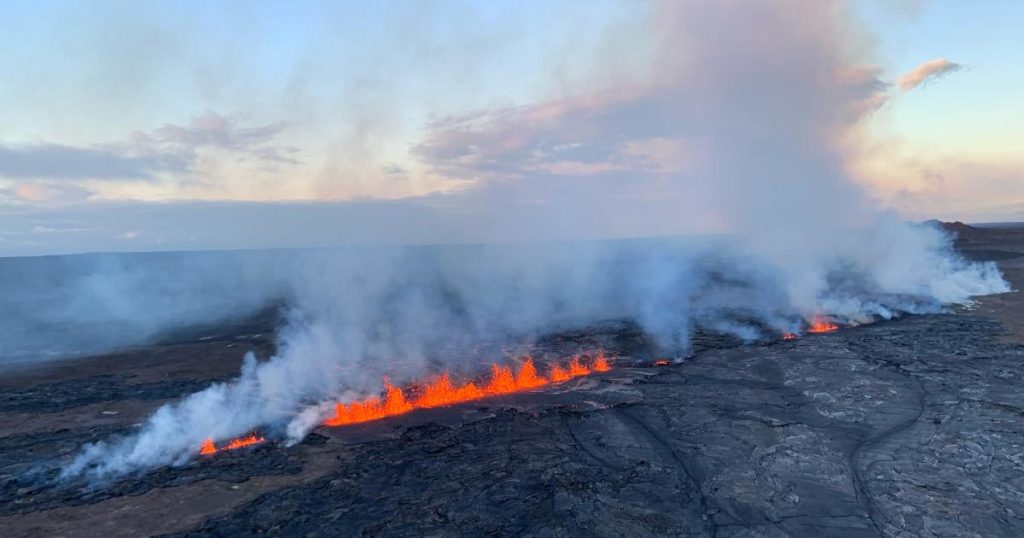On June 4, 2024, Hawaii’s Kilauea volcano erupted in a remote location of Hawaii Volcanoes National Park on the Big Island. The eruption, which occurred early in the morning, was considered to be low in eruptive volume and did not pose an immediate threat to human life or critical infrastructure. The U.S. Geological Survey’s Hawaiian Volcano Observatory warned of potential volcanic ash emissions, which can be harmful to planes, but later stated that there was less of a threat, with minor or no ash expected.
The eruption primarily released gas emissions and rock fragments into the air, known as tephra, posing hazards from the eruption. The eruption was limited to the area around Kilauea’s summit and the southern part of its caldera. Lava was observed erupting from fissures in the area, and high amounts of volcanic gas, including sulfur dioxide, were released, creating vog that can be hazardous to people and plants. The last eruption on Kilauea was in September 2023, but there hadn’t been any activity in the area of the recent eruption for nearly 50 years.
The eruption was preceded by an increase in seismic activity at Kilauea’s summit, indicating movement of magma below the surface. This activity included approximately 250 earthquakes during an eight-hour period, with the most powerful earthquake measuring a magnitude of 4.1 on Sunday night. The eruption was considered to have “paused” around 12:30 p.m. on the same day. The U.S. Geological Survey was unable to determine the duration of the eruption, as the previous one in December 1974 lasted about six hours.
Overall, while the eruption of Hawaii’s Kilauea volcano caused a temporary pause in activity, it highlighted the ongoing volcanic activity in the region. The eruption was monitored by the U.S. Geological Survey’s Hawaiian Volcano Observatory, which provided updates and warnings to ensure the safety of residents and visitors in the area. The release of volcanic gas and rock fragments from the eruption created hazards, including potential damage to planes from volcanic ash emissions. This event served as a reminder of the unpredictable nature of volcanic activity and the importance of monitoring and preparedness in volcanic regions like Hawaii.


